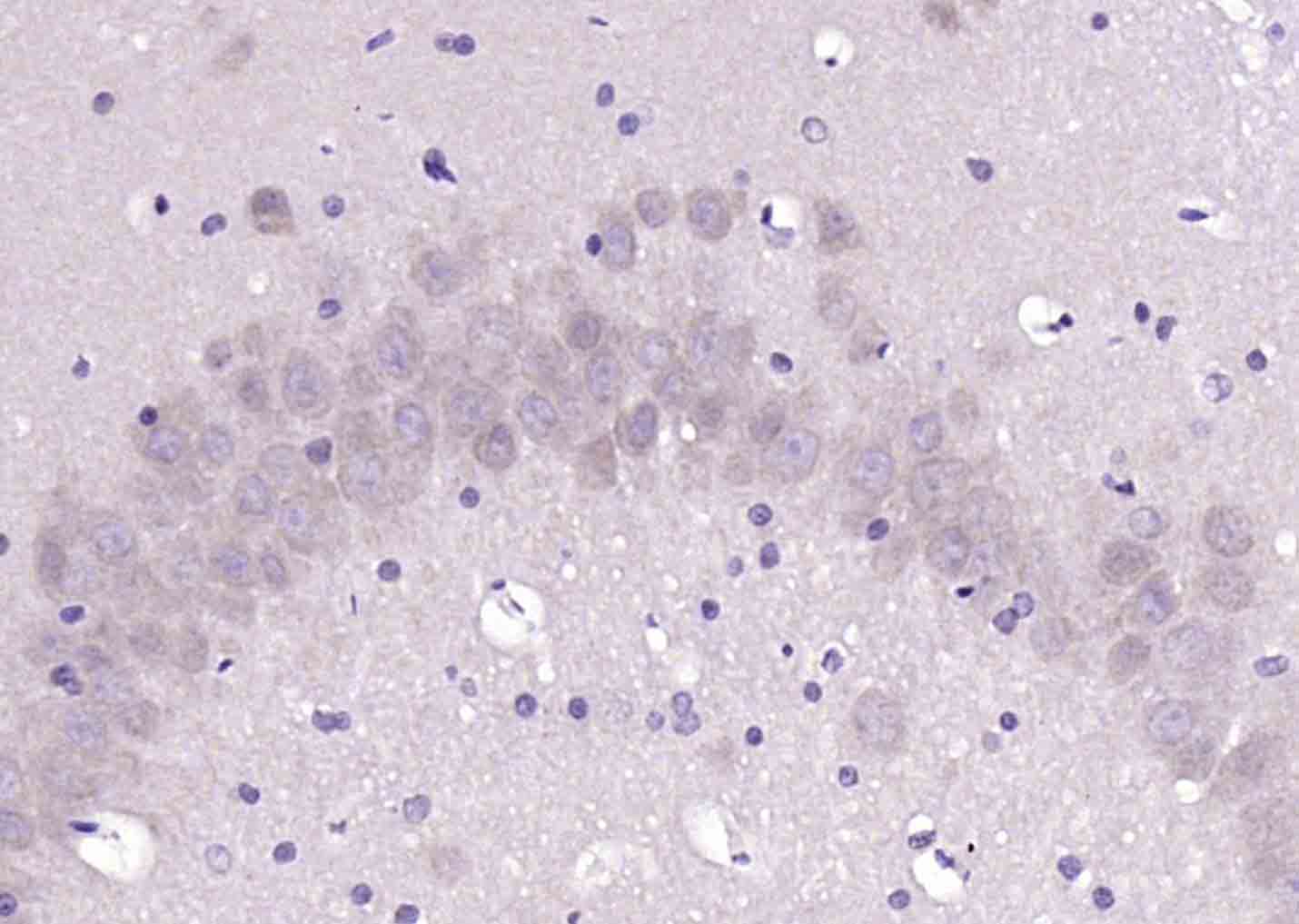
Rabbit Anti-ELAVL2 + ELAVL4 antibody
ELAV like 4; ELAV like neuronal protein 1; ELAV like protein 2; ELAV like protein 4; ELAVL 2; ELAVL 4; HELN1; Hu antigen B; Hu antigen D; HUB; HUD; ELAV2_HUMAN; ELAV4_HUMAN.
View History [Clear]
Details
Product Name ELAVL2 + ELAVL4 Chinese Name ELAVL2+ELAVL4蛋白抗体 Alias ELAV like 4; ELAV like neuronal protein 1; ELAV like protein 2; ELAV like protein 4; ELAVL 2; ELAVL 4; HELN1; Hu antigen B; Hu antigen D; HUB; HUD; ELAV2_HUMAN; ELAV4_HUMAN. Research Area Cell biology Neurobiology Signal transduction Epigenetics Immunogen Species Rabbit Clonality Polyclonal React Species Rat, (predicted: Human, Mouse, Chicken, Dog, Cow, Horse, ) Applications WB=1:500-2000 ELISA=1:5000-10000 IHC-P=1:100-500 IHC-F=1:100-500 ICC=1:100-500 IF=1:100-500 (Paraffin sections need antigen repair)
not yet tested in other applications.
optimal dilutions/concentrations should be determined by the end user.Theoretical molecular weight 39+42kDa Cellular localization The nucleus Form Liquid Concentration 1mg/ml immunogen KLH conjugated synthetic peptide derived from human ELAVL2: 31-110/359 Lsotype IgG Purification affinity purified by Protein A Buffer Solution 0.01M TBS(pH7.4) with 1% BSA, 0.03% Proclin300 and 50% Glycerol. Storage Shipped at 4℃. Store at -20 °C for one year. Avoid repeated freeze/thaw cycles. Attention This product as supplied is intended for research use only, not for use in human, therapeutic or diagnostic applications. PubMed PubMed Product Detail The Elav-like genes encode for a family of RNA-binding proteins. Elav, a Drosophila protein and the first described member, is expressed immediately after neuroblastic differentiation into neurons and is necessary for neuronal differentiation and maintenance. Several mammalian Elav-like proteins, designated HuC, HuD and Hel-N1, are also expressed in postmitotic neurons. An additional mammalian homolog, HuR, which is also designated HuA, is ubiquitously expressed and is also overexpressed in a wide variety of tumors. Characteristically, these homologs all contain three RNA recognition motifs (RRM) and they specifically bind to AU-rich elements (ARE) in the 3'-untranslated region of mRNAs transcripts. ARE sites target mRNA for rapid degradation and thereby regulate the expression levels of genes involved in cell growth and differentiation. When Elav-like proteins associate with these ARE sites this degradation is inhibited, leading to an increased stability of the corresponding transcript. Elav proteins function within the nucleus, and they are shuttled between the nucleus and cytoplasm by a nuclear export signal, which is a regulatory feature of the Elav-like proteins as it limits their accessibility to ARE sites.
Function:
ELAV2 binds RNA and seems to recognize a GAAA motif and is neuronal specific. ELAVL4 may play a role in neuron-specific RNA processing. It contains 3 RNA recognition motif (RRM) domains and is localised to brain tissue. ELAVL4 has been linked with the disease, paraneoplastic encephalomyelitis sensory neuropathy, which is associated with small cell lung cancer and is characterized by dementia, sensory loss, and other neurological disabilities. This disease may result from an immune response primarily directed against a small cell lung tumor antigen which is misdirected against similar antigens expressed in brain (such as ELAVL4).
Subcellular Location:
Interacts with IGF2BP1.
Tissue Specificity:
Brain; neural-specific.
Similarity:
Belongs to the RRM elav family.
Contains 3 RRM (RNA recognition motif) domains.
SWISS:
Q12926 P26378
Gene ID:
1993 1996
Database links:Entrez Gene: 1993 Human
Entrez Gene: 1996 Human
Entrez Gene: 15569 Mouse
Entrez Gene: 15572 Mouse
Omim: 168360 Human
Omim: 601673 Human
SwissProt: P26378 Human
SwissProt: Q12926 Human
SwissProt: Q60899 Mouse
SwissProt: Q61701 Mouse
UniProtKB/Swiss-Prot: Q12926.2 UniProtKB/Swiss-Prot: P26378.2
Product Picture
Bought notes(bought amounts latest0)
No one bought this product
User Comment(Total0User Comment Num)
- No comment



 +86 571 56623320
+86 571 56623320
 +86 18668110335
+86 18668110335

